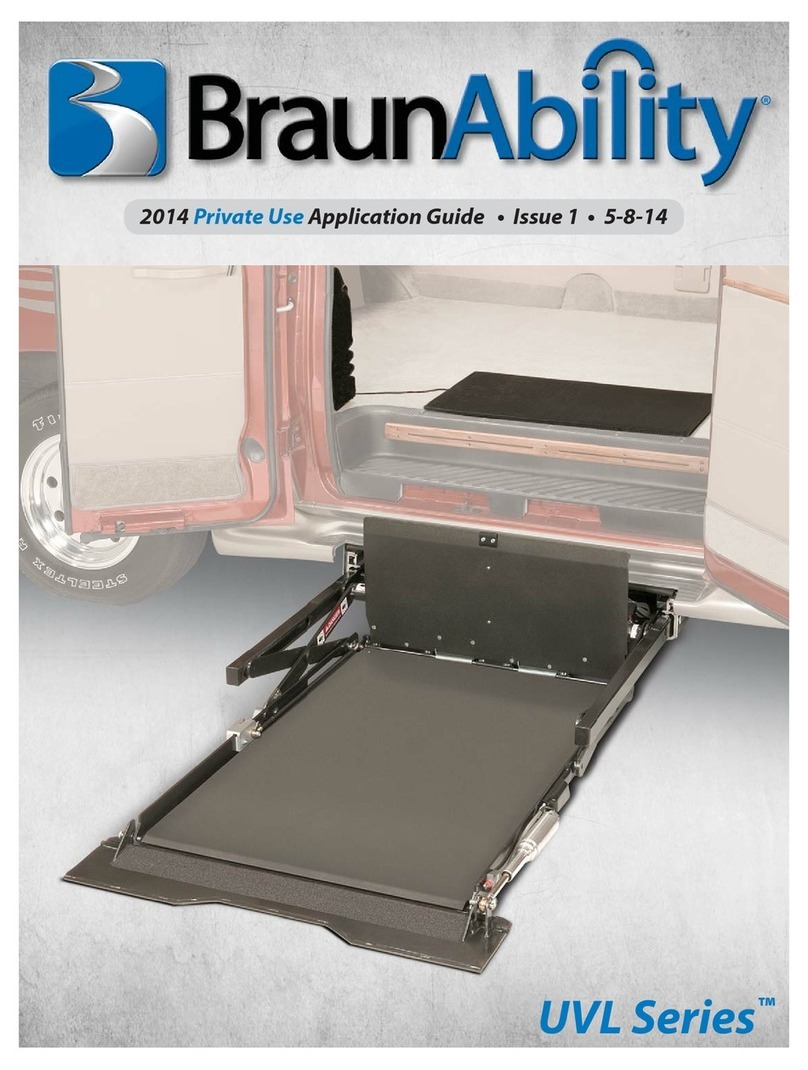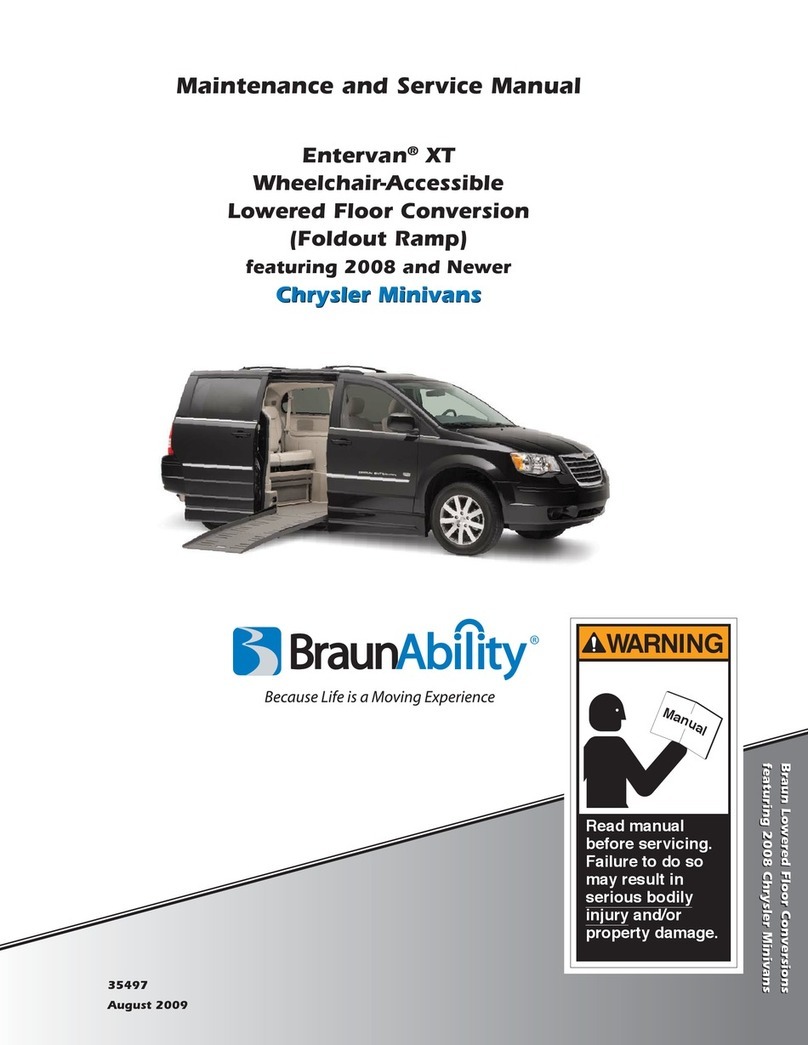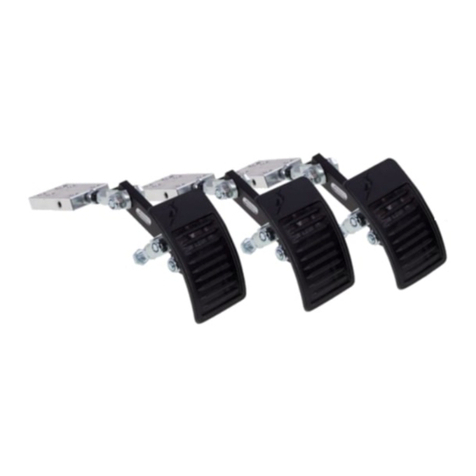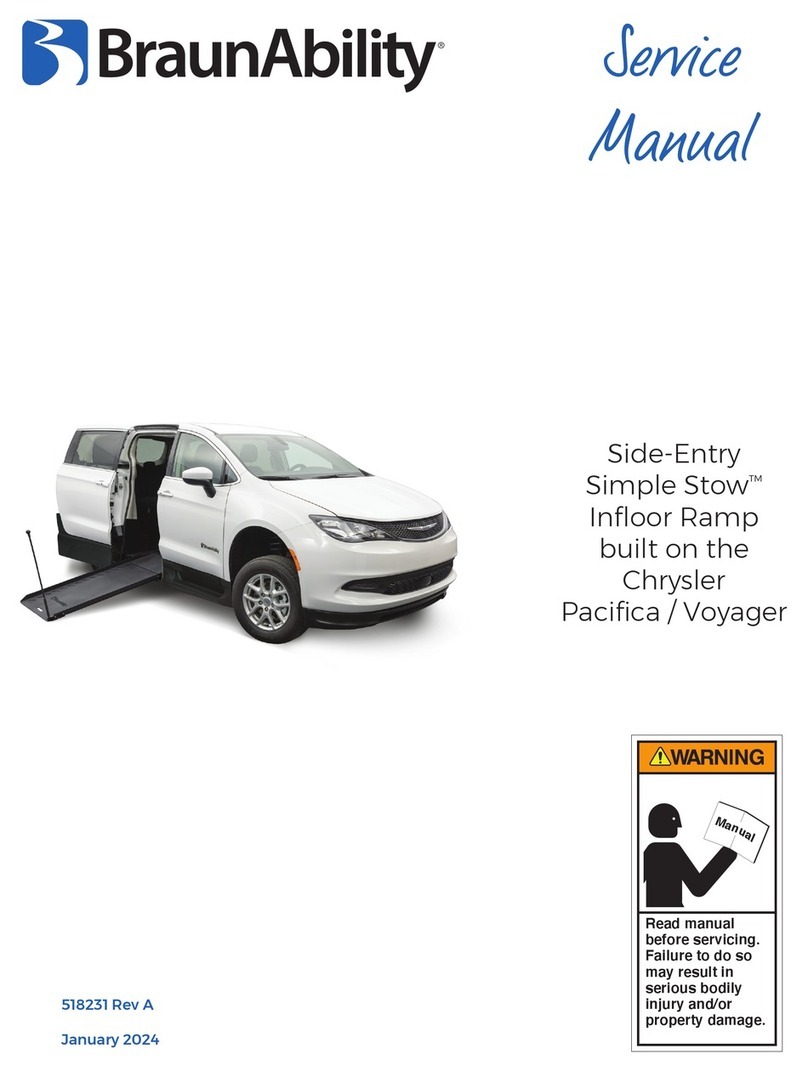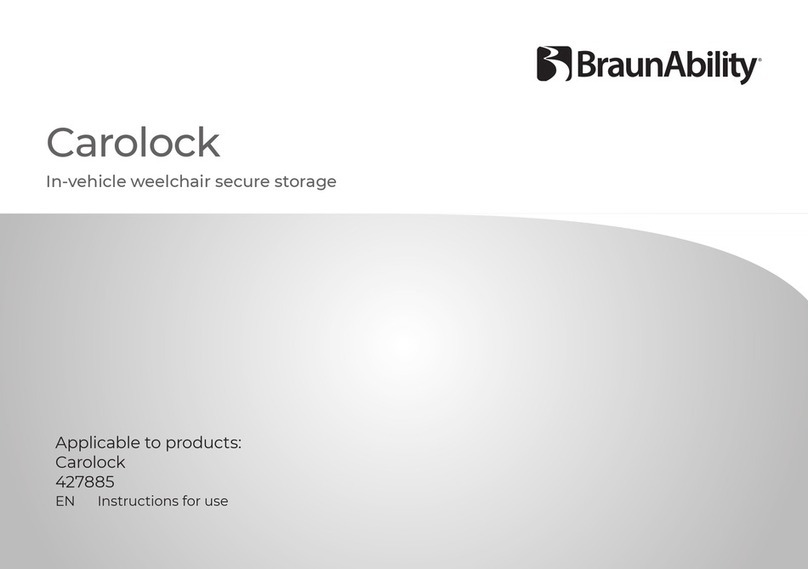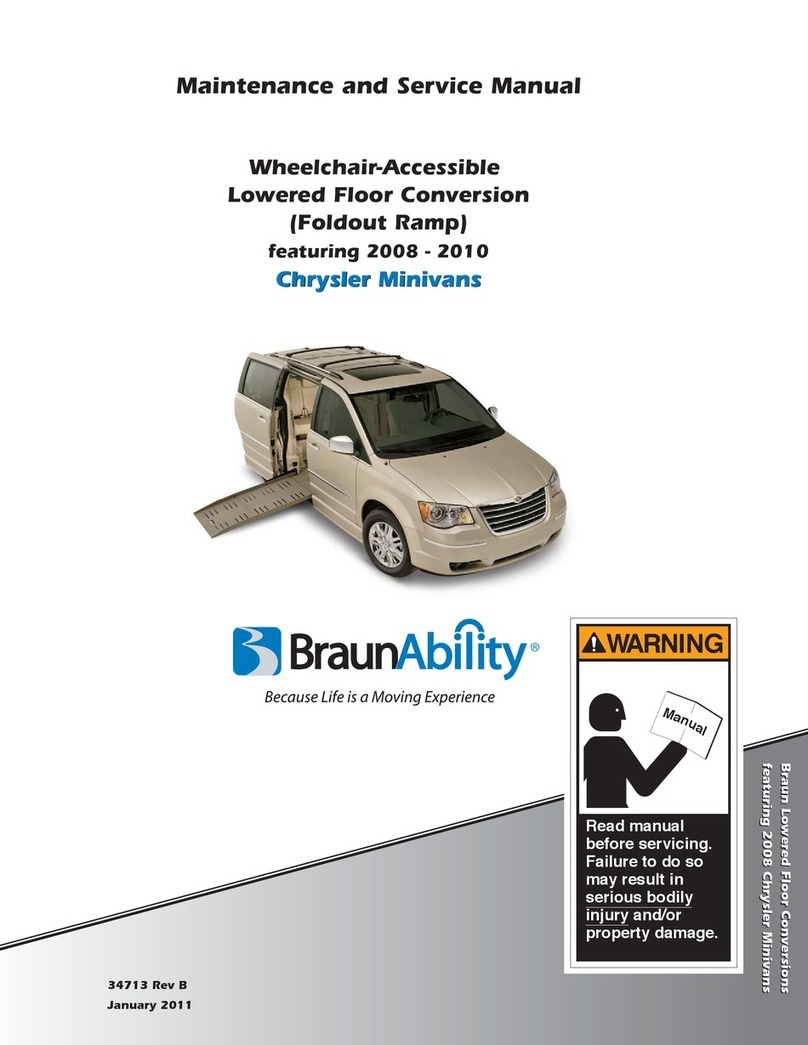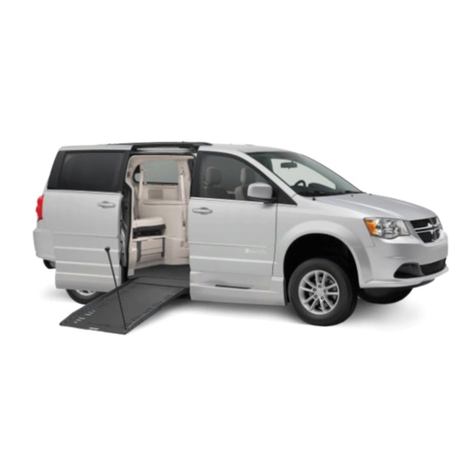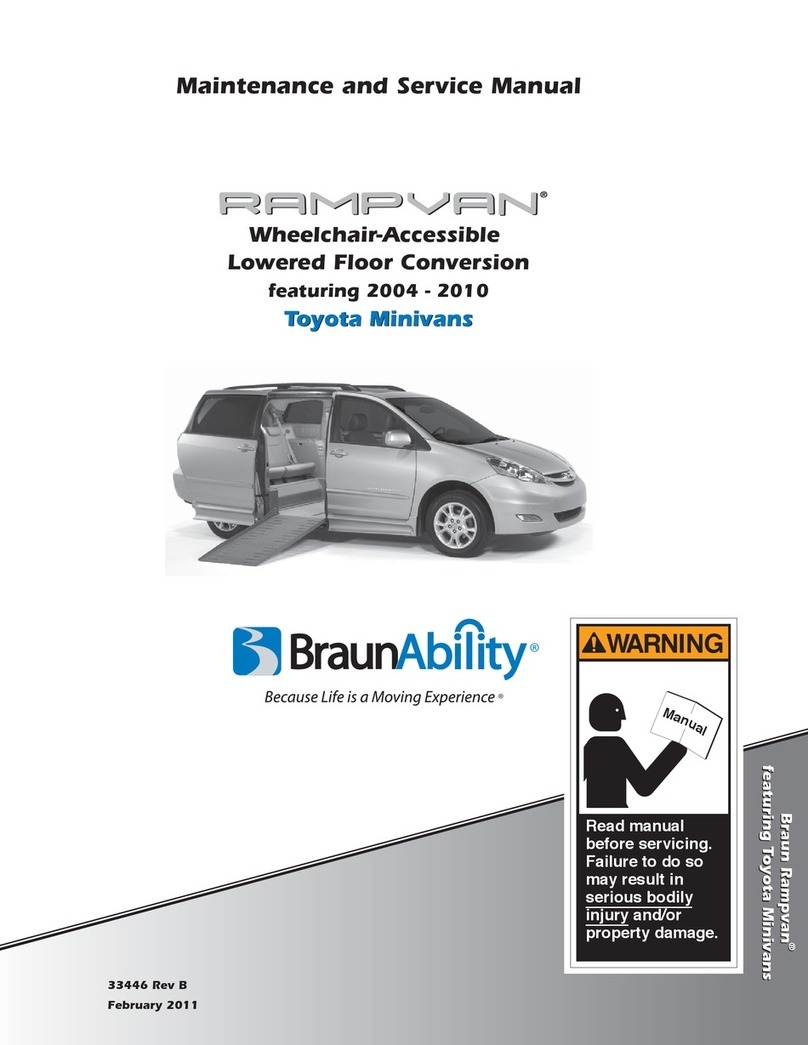
Fit and use
Fitting the front wheelchair tie-down
1. The rail will have been installed in the vehicle in accordance with our
own and the vehicle converter’s instruction. Position the wheelchair
within the vehicle as required.
2. Install the front tie-down ATF (aluminium track tting) into the front
rail by aligning the ATF feet with the cut-out sections of the rail, and
locate into the rail, (Fig 1).
3. Press down on the ribbed part of the ATF, (Fig 1A), and push rmly
towards the wheelchair until the yellow plunger drops and locks into
the rail.
4. Install the second front tie-down ATF in the same way, ensuring that
each tting is opposite each other, if using rail lengths which have
adjustability in ATF positioning.
5. Press the red buckle button(s) to release the webbed tongue, extend
and pass around each of the front wheelchair frame tie-down points,
(Fig 2), (some wheelchairs will indicate these tie-down positions, Fig
3). Reconnect the tongue back into the buckle, creating an angle of
around 40 to 60° within the front view zone, (Fig 4).
6. Release the wheelchair brakes and pull back to tension the front tie-
downs. Re-apply the brakes. The rear tie-downs should now be tted.
Removing the tie-downs
IMPORTANT: First remove the rear
tie-downs, as instructed on pages
12 and 13.
1. Once the rear tie-downs have
been removed, press the red
buckle release button to release
the webbed tongue. Pass back
through the front wheelchair
frame tie-down points and
return the tongue to the buckle.
2. Lift the ATF yellow plunger fully
and slide back away from the
wheelchair to align the ATF feet
with the rail cut-outs, lift away
from the rail.
Note: in an emergency, the front
tie-downs can be released from
the wheelchair without the need to
slacken the rears by simply pressing
the red buckle release button.
Fitting and using the wheelchair and occupant restraint - Kit 6
10 Kit 6 and Kit 7
